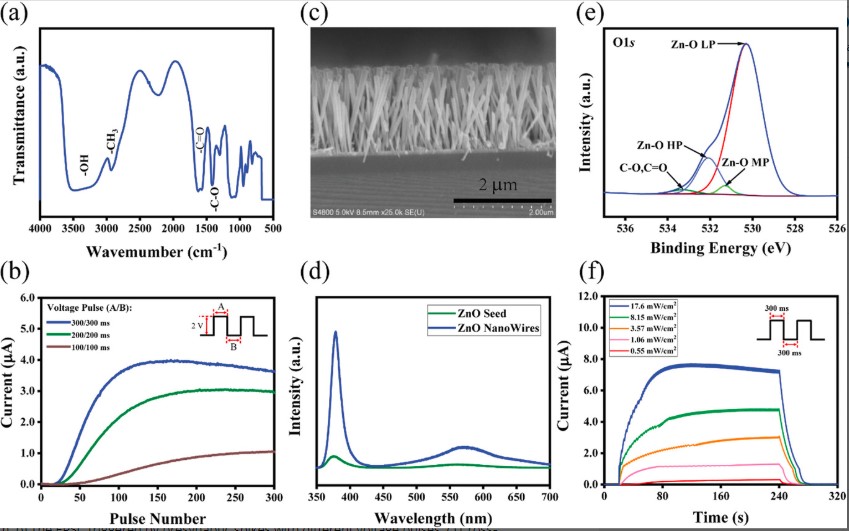文章专利

- 地址: 江苏省苏州市苏州工业园区若水路398号
- 邮箱: tzhang2009@sinano.ac.cn
- 电话: 86-512-62872706
- 传真: 0512-62603079
- 网址: http://nanosensor.sinano.ac.cn

Bioinspired Flexible, Dual‐Modulation Synaptic Transistors toward Artificial Visual Memory Systems. Adv. Mater. Technol. 2019, 5, 1900888
Fuqin Sun, Qifeng Lu, Lin Liu, Lianhui Li, Yingyi Wang, Mingming Hao, Zhiguang Cao,Zihao Wang, Shuqi Wang, Tie Li, and Ting Zhang*

Abstract
A prominent challenge for artificial synaptic devices toward artificial perception systems is hardware redundancy, which demands neuromorphic devices that integrate both sensing and processing functions. Inspired by the biological visual and nervous systems, a novel flexible, dual‐modulation synaptic field‐effect transistor (SFET) is demonstrated in this work. The flexible SFET is constructed with zinc oxide nanowires and sodium alginate, which acts as the semiconductor layer and the gate dielectric, respectively. An excitatory postsynaptic current in this artificial synapse can be triggered by both electrical and ultraviolet stimuli as presynaptic spikes as a result of the electric double layer effect and the photoelectric effect. More importantly, through the co‐modulation of light and electric stimuli, the memory level of the artificial synapses can be tuned based on the transformation between short‐term plasticity and long‐term plasticity initiated by the gate voltage. Different voltages can modulate the memory retention levels of the optical inputs similar to the function of the optic nerve system. The underlying mechanisms for the SFET are investigated using Fourier transform infrared spectroscopy, photoluminescence, and X‐ray photoelectron spectroscopy. Overall, the devices provide a novel idea to mimic visual memory, showing a promising strategy for future electronic eyes.
Full Article:https://onlinelibrary.wiley.com/doi/full/10.1002/admt.201900888
